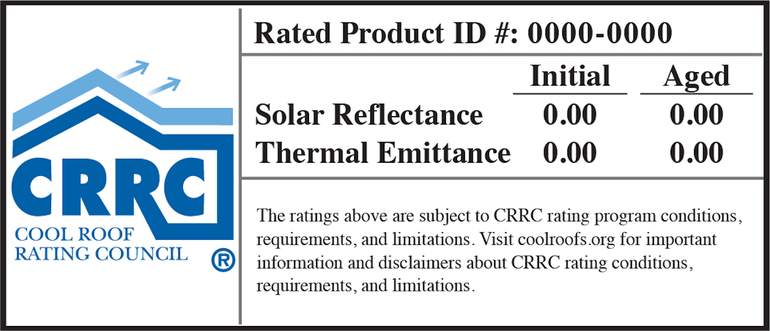From asphalt shingles to garden rooftops, cool roof technology can mitigate many effects of rising temperatures. Experts from National Women in Roofing and the Cool Roof Rating Council joined forces during a recent webinar to explore these solutions and the differences they make.

With continually rising temperatures, we've seen growing interest in alternative roofing materials and designs that help mitigate the effects of more extreme weather. "Eight of the top 10 warmest years on our planet occurred in the last decade," said NASA Administrator Bill Nelson in a January press release, "an indisputable fact that underscores the need for bold action to safeguard the future of our country—and all of humanity."
To determine how to offset these long-term, high-heat trends, scientists from NASA's Goddard Institute for Space Studies have studied the effects of a variety of roofing materials, including green roofs. Their most recent results were published earlier this year in the Sustainable Cities and Society journal and showed that, in their study of three Chicago sites, two of three green roofs in the study reduced temperatures.
In line with this focus on building materials as ways to mitigate the effects of a warming planet, National Women in Roofing (NWiR) recently hosted two webinars to dig deeper into cool roof technology, heat equity and vegetative roofs.
Let's recap the first of the two webinars, led by NWiR's Education and Diversity, Equity and Inclusion Committees. Keep an eye out next week for coverage on the second session, focused on vegetative roofing.
Keeping It Cool: Using Cool Roofs to Combat Heat Islands and Save Energy
Sarah Schneider, deputy director of the Cool Roof Rating Council (CRRC), and Audrey McGarrell, project manager of the CRRC, led the first webinar in a two-part series focused on how cool roofs can combat heat islands and save energy—particularly in urban environments.

According to Schneider, the urban heat island effect results from three main causes:
Tall buildings that block or slow air movement (also known as urban canyons)
Waste heat from vehicles and AC units
Darker surfaces and a lack of vegetation
She also noted that, as of July 11, 2022, more than 12 million Americans were under excessive heat warnings. These high temperatures can lead to heat illness as well as disruptions to key infrastructures, such as power grids and water supplies. Construction workers, including roofers, have a disproportionate risk of heat-related death, according to a 2021 study conducted by CPWR, the Center for Construction Research and Training.
"Cool roofs can help reduce strain on the electrical grid during peak times and lower greenhouse gas emissions," Schneider continued. "They also help reduce outdoor air temperatures, mitigating the urban heat island effect and also slowing the production of ground-level ozone, which is key to the production of smog. Basically, it increases air quality while also supporting important urban infrastructure."
Why the CRRC matters to roofing contractors
The CRRC, according to McGarrell, is a member-based organization created to provide a third-party rating of the radiative properties of roofing systems and materials in California. She said the CRRC is the "primary source of radiative property data in the U.S." In 2019, in fact, the organization expanded its purview to include exterior wall products. They host a searchable, sharable directory and have resources catered specifically to roofing contractors seeking products that will help offset the effects of high temperatures.

Product ratings are based on radiative properties, and products receive an initial rating before they are observed on test farms for three years to produce a three-year-aged rating. The CRRC also conducts random testing "to ensure products continue to match their measured values," said McGarrell.
For part two of NWiR's cool roof tech and heat equity educational series, sign up for the Aug. 18 webinar, "Building Solutions for Increasing Heat Equity."
Read more about:
sustainabilityAbout the Author(s)
You May Also Like




